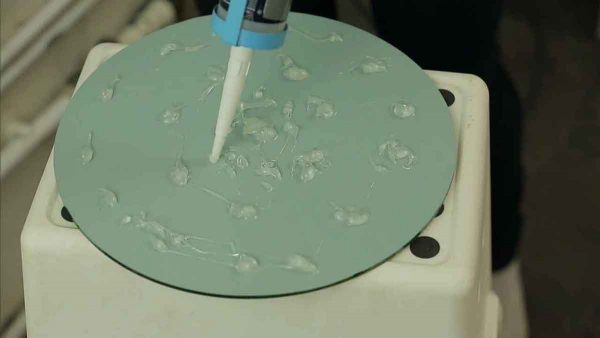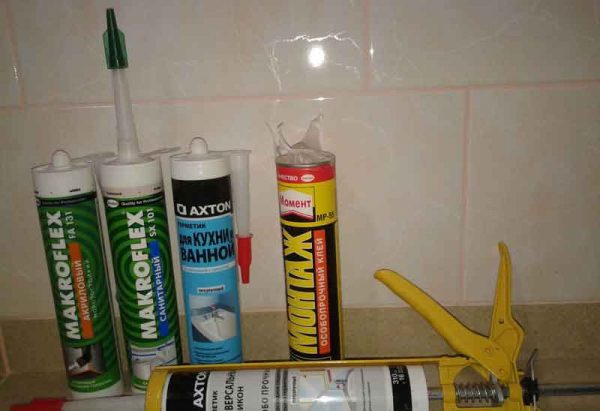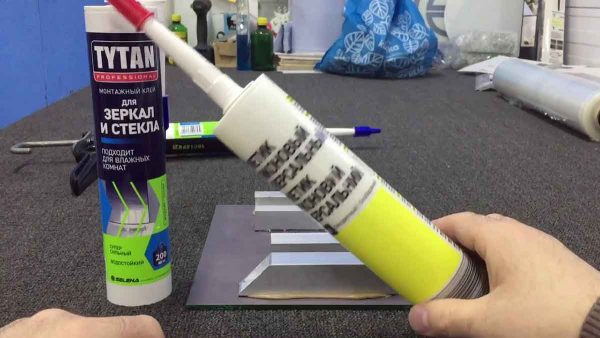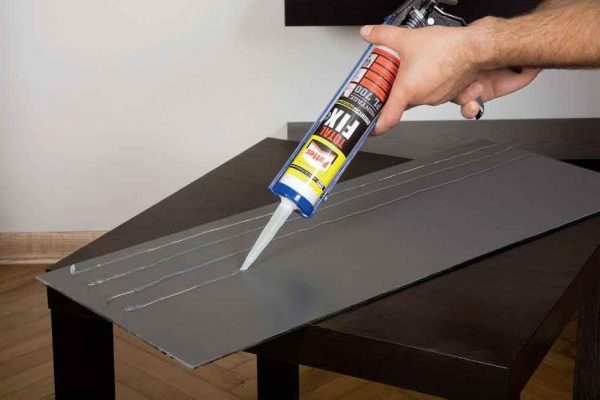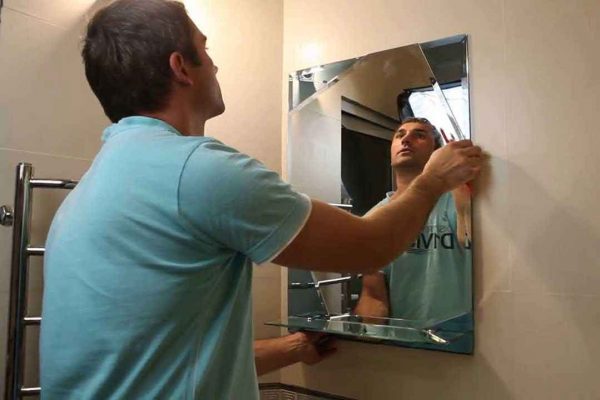During repairs, you often have to hang a mirror on the wall. If the product has a frame, pre-designed fasteners, the problem is easily fixed, but in the absence of such devices, you will have to think about another solution. When there is no desire to drill the wall to install the holders, you can use liquid nails for mirrors - a special adhesive-sealant that holds the product securely for a long time.
- Sealant classification
- Suitable adhesives for mirrors
- Adhesive requirements for dry and wet rooms
- Proper use of liquid nails
- How to mount a mirror on the wall
- Attachment to the cabinet door
- Connection of homogeneous and heterogeneous surfaces
- How to remove a mirror from liquid nails

Sealant classification
To work with the mirror you need to choose the appropriate type of adhesive. At the back of each mirror sheet there is an amalgam substrate, and some adhesives are able to dissolve it, therefore they are not suitable for work. Most often, for fastening mirrors to tiles, wood, and other materials, liquid nails are used - a special building sealant based on synthetic rubber (silicone) or polymers.
All products are divided into neoprene and acrylic. The former are prepared on the basis of rubber, the latter contain acrylic. By appointment, the characteristics of sealants are divided into the following types:
- construction - are used for closing cracks, chips, sealing frames, fastening various structures, contain neutral reagents as hardeners;
- roofing - resistant to atmospheric factors, ideal for outdoor use, not afraid of water;
- plumbing - additionally contain antiseptics, fungicides, have moisture resistance;
- universal - can boast a high degree of adhesion to most known materials, but rarely have antiseptic properties and good moisture resistance;
- hydraulic - are recommended as sealants when working with cast iron, aluminum, ceramic parts;
- glass - suitable for glossy substrates - glass, ceramics.
By type of curing, liquid nails are acidic and neutral. The former are not suitable for plastic and can spoil the metal because they contain acids. Neutral compounds are suitable for gluing products from acrylic, PVC, rubber, as well as marble, natural stone. They are odorless, do not provoke corrosion of metal surfaces.
to contents ↑Suitable adhesives for mirrors
Neutral silicone mirror sealant is a good option, it is perfect for working with decorative paintings.
It is only important to clarify whether there is a solvent in the product: some of them cannot be used categorically for mirror surfaces, since they quickly destroy the reflective layer. Information on the suitability of a particular sealant is on the packaging.
As for the best brands of liquid nails, which can be purchased for gluing mirrors, these should be called:
- MACROFLEX MF 930. Suitable for decorative, mosaic mirrors up to 6 mm thick when fastened to concrete, glass, tile. It is stable in a humid environment, tolerates temperature differences up to - 5 ... + 60 degrees, does not spoil the amalgam.
- KRASS "Liquid Nails". Glues mirrors in any room, suitable for mirror tiles, including when attached to deformable substrates. Quickly sets, does not flow from vertical surfaces, has a high degree of adhesion.
- "Titanium for mirrors." Adhesive based on rubber, synthetic resins. It can stick mirrors of almost any thickness to drywall, wood, concrete, brick, metal. It does not provoke corrosion, does not spoil non-ferrous metal products. An elastic seam is not destroyed by deformations, temperature changes.
Adhesive requirements for dry and wet rooms
If the adhesive composition is planned to be used in the bathroom, in the kitchen, it must withstand high humidity, not deteriorate and not collapse from contact with water. To avoid mold in the glue, antifungal supplements must be present.
In dry rooms, only highly elastic means are used that do not shrink: otherwise, when the temperature regime is changed, the sealant will crack, peel off from the wall.
There are general requirements for any formulations:
- Security. On liquid nails should be marked "for internal work" - such compositions usually do not contain solvents, are harmless to humans. Also, a good sealant does not destroy the amalgam layer, since it contains no acids, alkalis, and the pH varies between 8–12.
- High adhesion to amalgam. The product must firmly and tightly adhere to the back of the mirror, hold it securely without displacement.
- Transparency or white. Dark sealants can look ugly ugly, so it's best not to purchase them.
- Polymerization time. If the composition dries for a long time, to fix the mirror will have to provide special designs, which is inconvenient.
Proper use of liquid nails
It is necessary to apply sealant together with a special gun into which the cylinder is inserted. First you need to cut off the tip from the tube, screw on the dispenser that comes with the kit. The base and mirror should be cleaned, degreased, dried, and only then apply glue.
to contents ↑
How to mount a mirror on the wall
To place the mirror exactly, you need to mark on the wall - draw a straight line where the bottom of the product will pass. Immediately put a temporary support, which will not allow him to slip until the glue dries. If this is not possible, you will have to fix the mirror with tape on the front side.
From a decorative cloth it is necessary to remove a protective paper (to peel off from the wrong side), apply glue on the perimeter, diagonally. Wait 1-3 minutes, attach a mirror to the wall, press well. Remove excess glue immediately with a wet rag, since then you will have to scrape it off with great difficulty.
Usually, the support or adhesive tape for fixation is removed after a day, but at a low temperature in the room the process of drying the glue can last up to 48 hours.
to contents ↑Attachment to the cabinet door
To decorate the cabinet with a mirror cloth, you need to act in this way:
- remove the door, lay it on the floor, table;
- make markings for a beautiful arrangement of the mirror;
- to cover the door with masking tape so that its strips pass exactly along the marking (to protect the surface from traces of glue);
- apply sealant along the strips of tape;
- to put a mirror to the door, to press;
- Allow the product to dry for a day.
Small-sized mirrors can be glued to walls, cabinets on double-sided tape. Larger products should be fixed more securely using liquid nails.
to contents ↑Connection of homogeneous and heterogeneous surfaces
For bonding materials homogeneous in structure, any adhesive sealant can be used - adhesion will have a sufficient degree.
When joining heterogeneous surfaces, a composition is selected, the instructions for which indicate suitability for both types of substrates. Otherwise, the sealant may spoil the amalgam layer or simply snap off over time.
How to remove a mirror from liquid nails
To disconnect the glued product without damaging it, you need to proceed carefully. A strong, thin wire longer than the width of the mirror will be required. She is carefully moved from the wrong side of the canvas, starting from the top, while the assistant holds the mirror to prevent it from falling. Move the wire diagonally, from right to left, in other directions to crush the dried glue. After that you can remove the mirror and clean it of the remnants of the sealant, if it is required, then the product can be reused.

